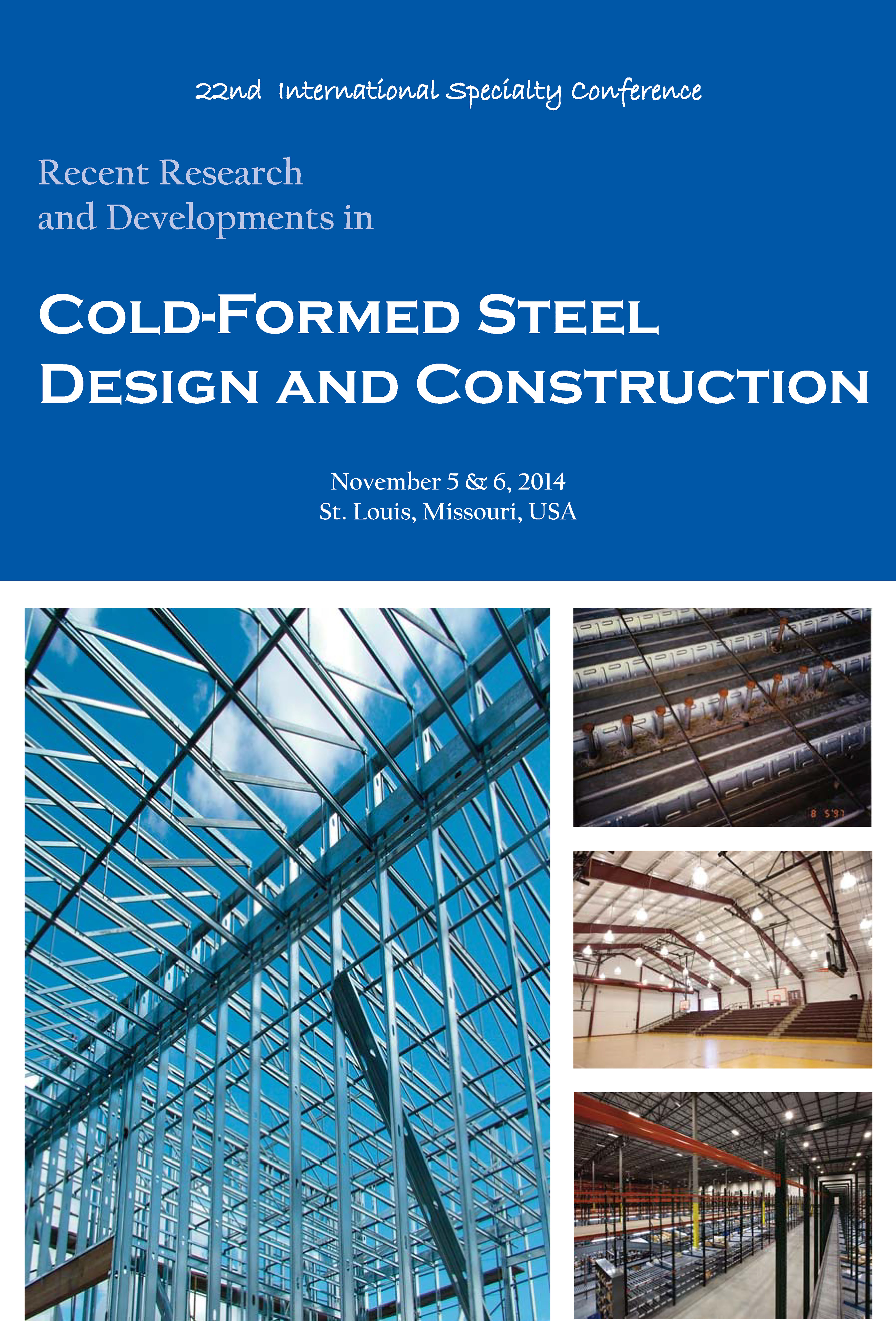Session Dates
06 Nov 2014
Keywords and Phrases
Cold-Formed Steel; Stressed-Skin Action; Optimization
Abstract
Cold-formed steel portal frames can be a viable alternative to conventional hot-rolled steel portal frames. They are commonly used for low-rise commercial, light industrial and agricultural buildings. In this paper, the effect of semi-rigid joints and stressed-skin action are taken into account in the optimal design of cold-formed steel portal frames. A frame idealization is presented, the results of which are verified against full-scale. A real-coded niching genetic algorithm (RC-NGA) is then applied to search for the minimum cost for a building of span of 6 m, height-to-eaves of 3 m and length of 9 m, with a frame spacing of 3 m. It was shown that if stressed-skin action and joints effects are taken into account, that the wind load cases are no longer critical and that the serviceability limit state controls for the gravity load case with the apex deflection binding. It was also shown that frame costs are reduced by approximately 65%, when compared against a design that does not consider stressed-skin action, and 50% when compared against a design based on rigid joints.
Department(s)
Civil, Architectural and Environmental Engineering
Research Center/Lab(s)
Wei-Wen Yu Center for Cold-Formed Steel Structures
Meeting Name
22nd International Specialty Conference on Cold-Formed Steel Structures
Publisher
Missouri University of Science and Technology
Document Version
Final Version
Rights
© 2014 Missouri University of Science and Technology, All rights reserved.
Document Type
Article - Conference proceedings
File Type
text
Language
English
Recommended Citation
Phan, Duoc T.; Wrzesien, Andrzej M.; Lim, James B. P.; and Hajirasouliha, Iman, "Effect of Stressed-Skin Action on Optimal Design of a Cold-Formed Steel Portal Framing System" (2014). CCFSS Proceedings of International Specialty Conference on Cold-Formed Steel Structures (1971 - 2018). 4.
https://scholarsmine.mst.edu/isccss/22iccfss/session09/4
Effect of Stressed-Skin Action on Optimal Design of a Cold-Formed Steel Portal Framing System
Cold-formed steel portal frames can be a viable alternative to conventional hot-rolled steel portal frames. They are commonly used for low-rise commercial, light industrial and agricultural buildings. In this paper, the effect of semi-rigid joints and stressed-skin action are taken into account in the optimal design of cold-formed steel portal frames. A frame idealization is presented, the results of which are verified against full-scale. A real-coded niching genetic algorithm (RC-NGA) is then applied to search for the minimum cost for a building of span of 6 m, height-to-eaves of 3 m and length of 9 m, with a frame spacing of 3 m. It was shown that if stressed-skin action and joints effects are taken into account, that the wind load cases are no longer critical and that the serviceability limit state controls for the gravity load case with the apex deflection binding. It was also shown that frame costs are reduced by approximately 65%, when compared against a design that does not consider stressed-skin action, and 50% when compared against a design based on rigid joints.



